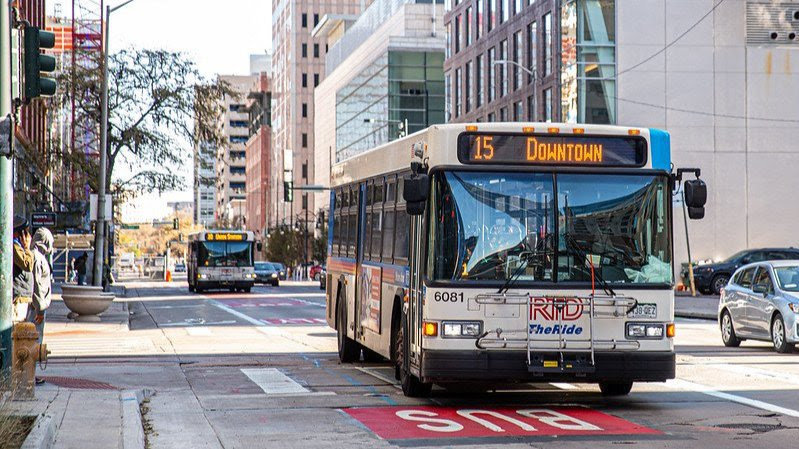On October 3, 2019, the Denver Streets Partnership hosted a second Amazing Denver Mobility Race. This edition of the mobility race featured six teams trying to get from one end of downtown to the other during evening rush hour. Each team was assigned a different mode of travel and the champion would be bestowed a Pokey Award. Unlike the previous mobility race we hosted however, the goal was not to win. Because to “win” a Pokey Award, you had to come in last.
The teams were asked to walk, bike, roll in an electric-powered wheelchair, ride the 16th Street Free Mall Ride, drive/park, or take the 15 bus to travel the 1.1 miles between Union Station and Civic Center Station. Anyone who has ever ridden an RTD bus down 17th Street at 5pm knows who took Pokey the Turtle home with them. Check out the video below to see how the 15 bus “won” the prize!
So why would we award the slowest mode in a race? Our goal was to highlight the need for more dedicated bus lanes on our busiest streets to improve the reliability and efficiency of our public transit system. On 15th Street, Denver recently added the first new 24-hour bus-only lanes since the Broadway bus lane became a 24-hour lane in 2017. Bus lanes will be coming to 17th Street in December and plans for bus lanes on 18th and 19th Streets are in the works.
RTD estimates that dedicated lanes could cut travel time for people on buses through downtown by as much as 42% during rush hour. And that’s just an average time savings. We looked at an RTD schedule and counted 833 daily buses that use 17th Street alone on weekdays – that’s one bus roughly every 60 seconds during rush hour.
Most buses that run through downtown use 15th, 17th, 18th, or 19th at some point on their routes. The traffic on these four streets slows down thousands of buses along this short stretch of their overall routes, impacting people in places as far away as Aurora, Littleton, Arvada, Boulder, and Thornton. Eliminating delays and boosting reliability in just downtown provides an incredible bang for the buck because it will help improve the transit system across the whole region. With just some red paint and new signage, cities across the country have been creating or transforming their bus infrastructure with promising results.
In New York City, bus only lanes on 14th Street increased bus speeds on a one-mile stretch of the route by 30 percent, from 15 minutes to 10 minutes. By comparison, it takes on average about 20 minutes to walk one mile. The New York Transit Authority has reported a 17 percent increase in ridership on weekdays (and as much as 40 percent on Saturdays!) since the lanes were implemented. The Washington, D.C. transit authority also reports improved reliability and speed for buses in new bus lanes along H and I Streets and is looking to extend the hours of the lanes.
Dedicated bus lanes have also been shown to improve traffic safety. In San Francisco, collisions went down by 16 percent after three new bus lanes were added. Here in Denver, we have already surpassed last year’s number of people killed in traffic crashes on our road so we should be taking advantage of strategies that help us work toward our citywide Vision Zero goal.
The Denver Streets Partnership applauds the City and County of Denver and RTD on the new dedicated bus lanes additions. Transportation tools like these will be indispensable in achieving Denver’s mobility, safety, equity, and climate goals.

